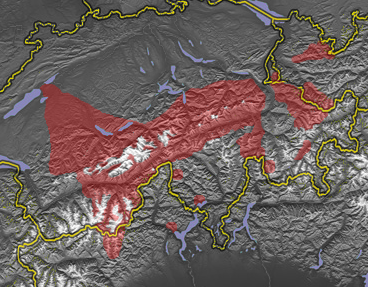|
Val Vogna
Val Vogna (''I' Vejin'' in Walser) is a lateral valley of Valsesia, inside the municipality of Riva Valdobbia, Italy. West of Riva Valdobbia town, opens the Val Vogna, a side valley just in part served by paved road, on the old so-called ''Antica via d'Aosta'' “ancient Aosta Track”, that united Riva Valdobbia to Gressoney-Saint-Jean through the Pennine Alps#Passes, colle di Valdobbia, the Valdobbia Pass. Geography Val Vogna opens west of Riva Valdobbia as a tributary of the Sesia Valley, with Val d'Otro north and Valle Artogna south. The general direction of the valley is East to West, with a slight moonshaped round turn pointing southwest at the end. There is only one notable tributary to the Vogna torrent, the Rissuolo torrent from Corno Bianco peak. The Rissuolo torrent makes a sharp cut in the middle of the north slope and reaches the main valley just west of ''La Peccia'' Hamlet, passing under the so-called Riva Valdobbia#Napoleonic War, Napoleonic Bridge. Val Vogna w ... [...More Info...] [...Related Items...] OR: [Wikipedia] [Google] [Baidu] |
Walser
The Walser people are the speakers of the Walser German dialects, a variety of Highest Alemannic. They inhabit the region of the Alps of Switzerland and Liechtenstein, as well as the fringes of Italy and Austria. The Walser people are named after the Wallis (Valais), the uppermost Rhône valley, where they settled from roughly the 10th century in the late phase of the migration of the Alamanni, crossing from the Bernese Oberland; because of linguistic differences among the Walser dialects, it is supposed that there were two independent immigration routes. From the upper Wallis, they began to spread south, west and east between the 12th and 13th centuries, in the so-called Walser migrations (''Walserwanderungen''). The causes of these further population movements, the last wave of settlement in the higher valleys of the Alps, are not entirely clear. Some think that the large ''Walser'' migrations took place because of conflicts with the valley's feudal lords. Other theories con ... [...More Info...] [...Related Items...] OR: [Wikipedia] [Google] [Baidu] |

